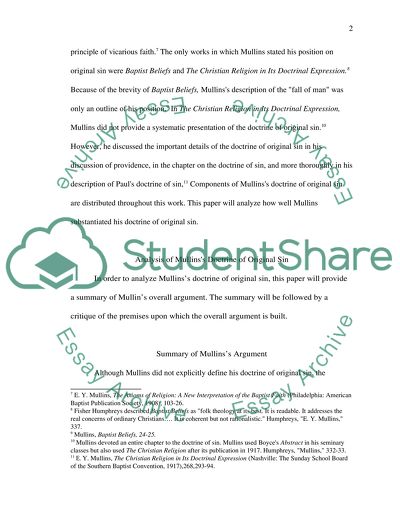Cite this document
(“Mullins' Doctrine of Sin Research Paper Example | Topics and Well Written Essays - 3250 words”, n.d.)
Retrieved de https://studentshare.org/religion-and-theology/1390432-sin
Retrieved de https://studentshare.org/religion-and-theology/1390432-sin
(Mullins' Doctrine of Sin Research Paper Example | Topics and Well Written Essays - 3250 Words)
https://studentshare.org/religion-and-theology/1390432-sin.
https://studentshare.org/religion-and-theology/1390432-sin.
“Mullins' Doctrine of Sin Research Paper Example | Topics and Well Written Essays - 3250 Words”, n.d. https://studentshare.org/religion-and-theology/1390432-sin.


